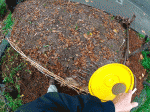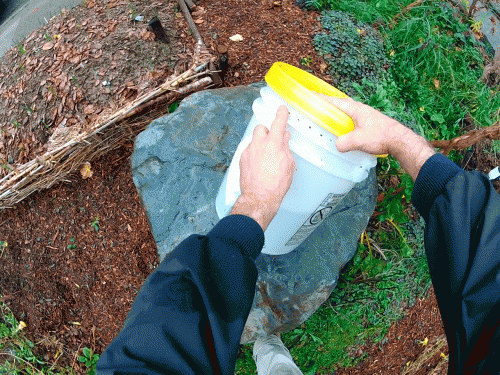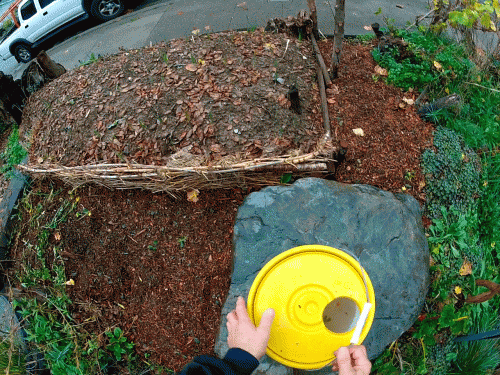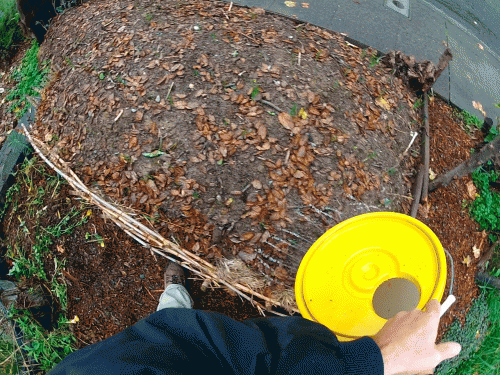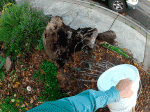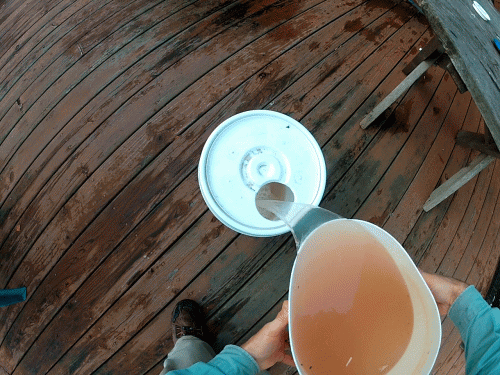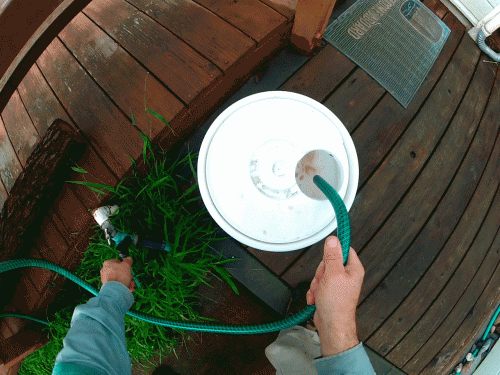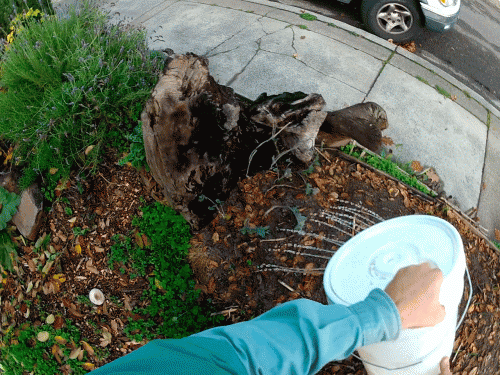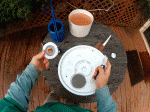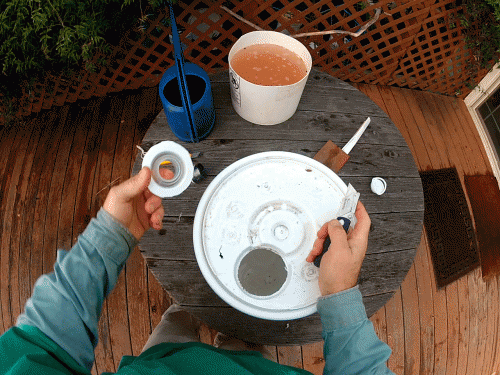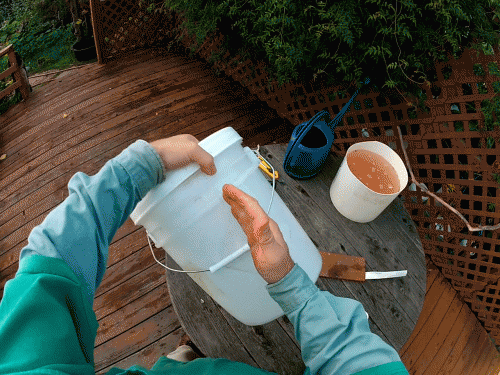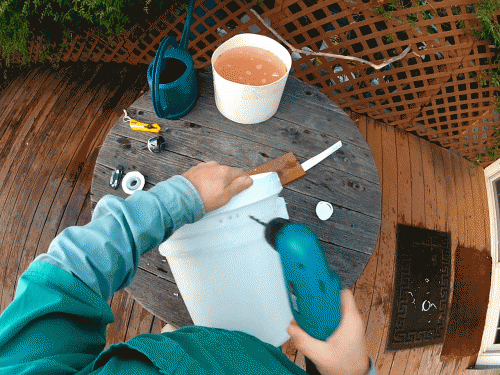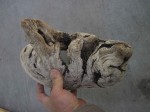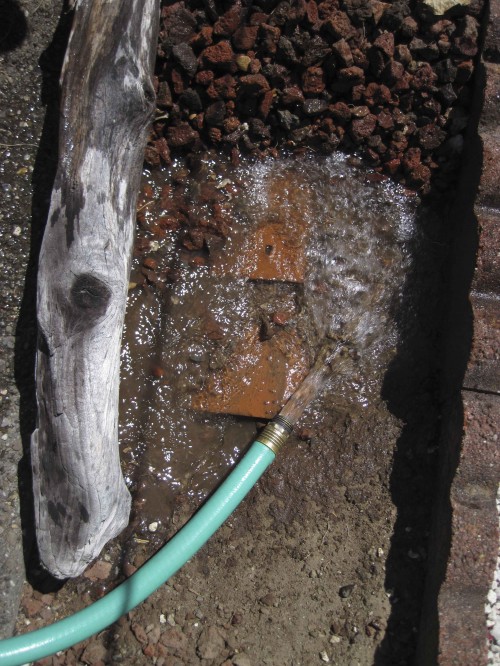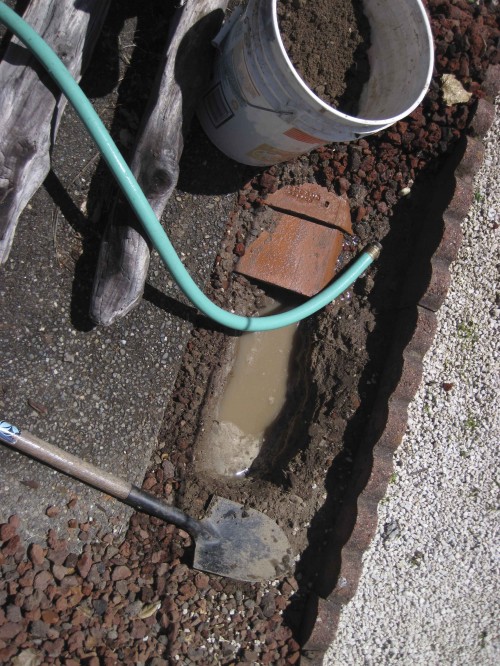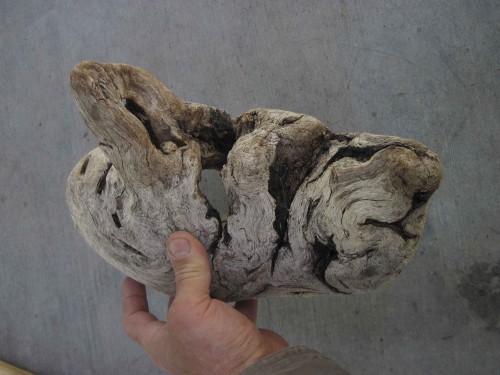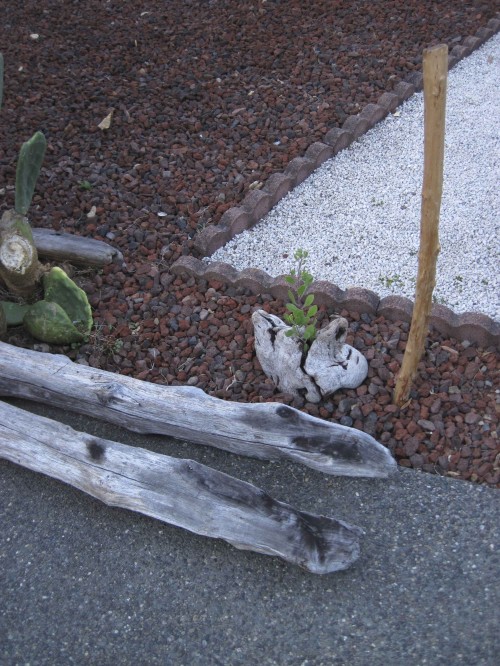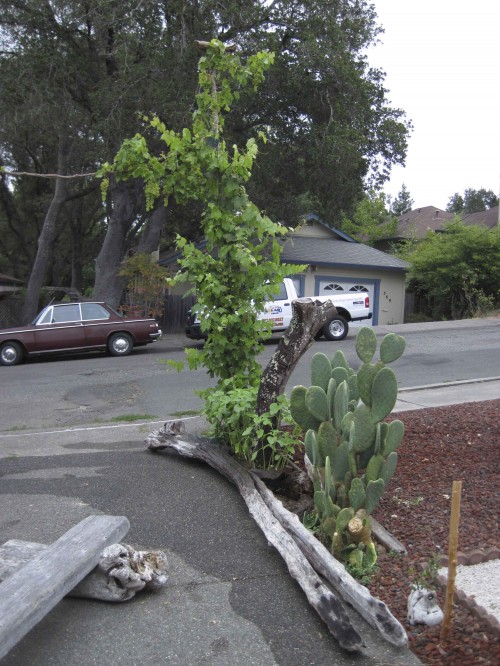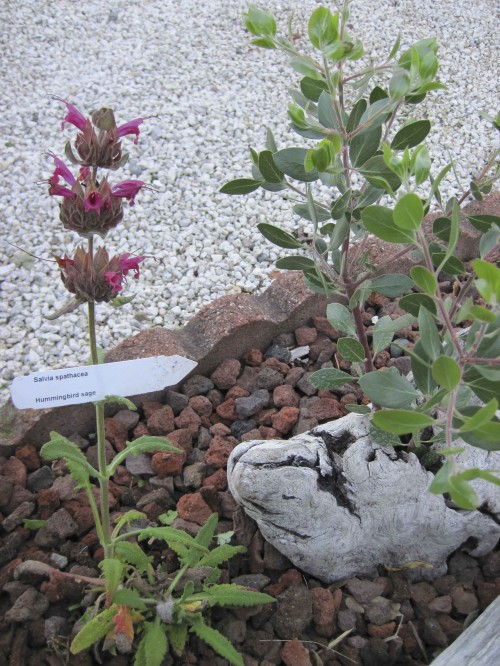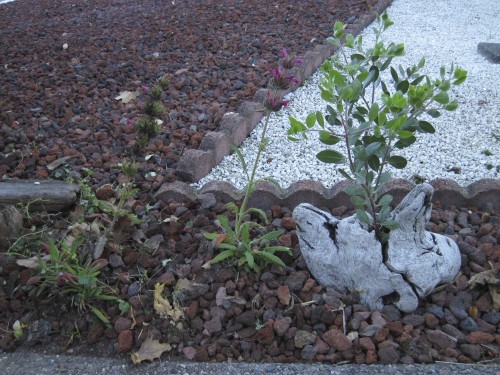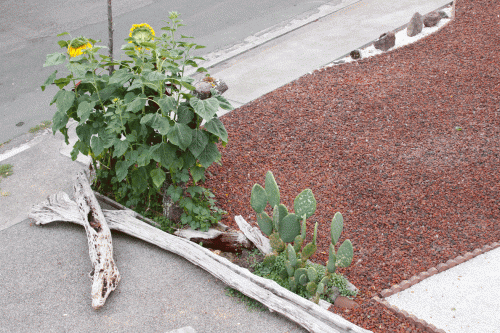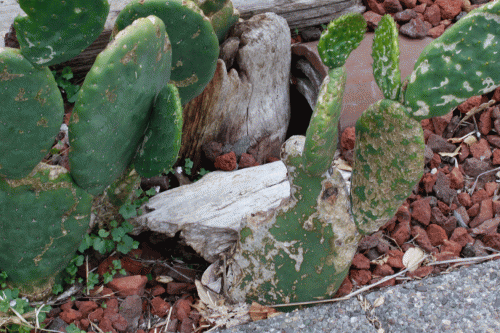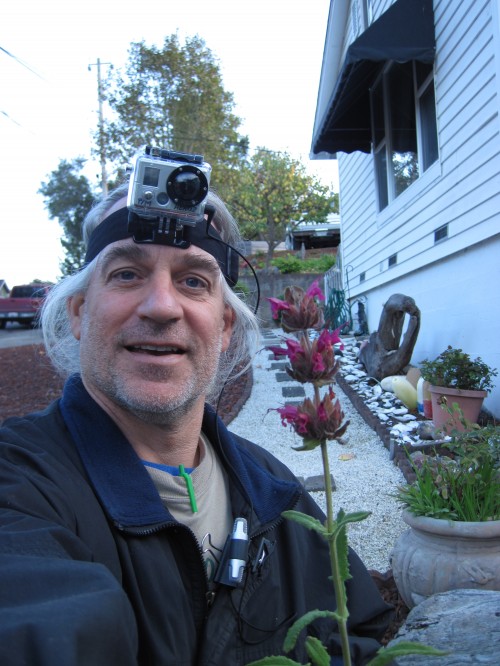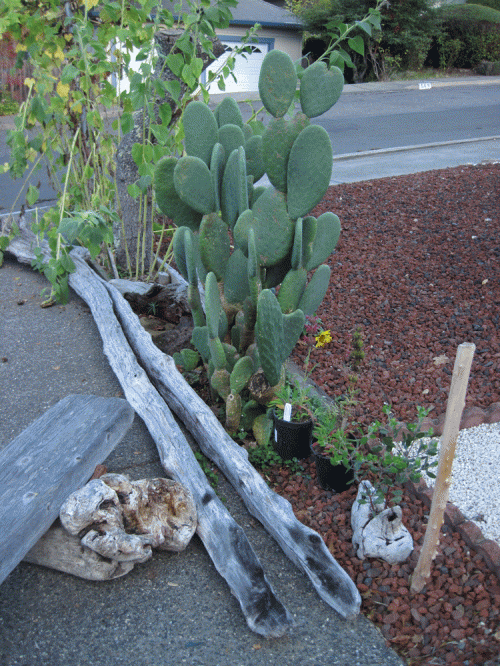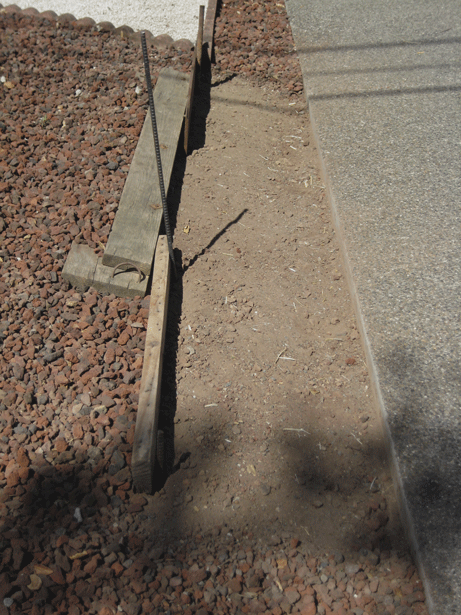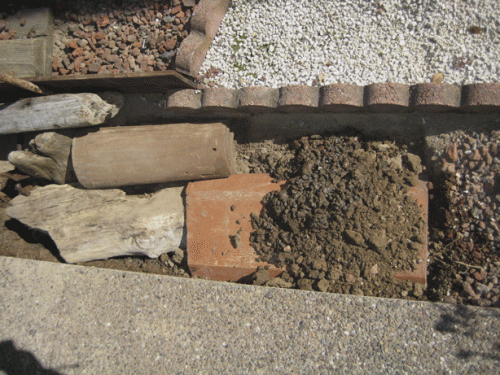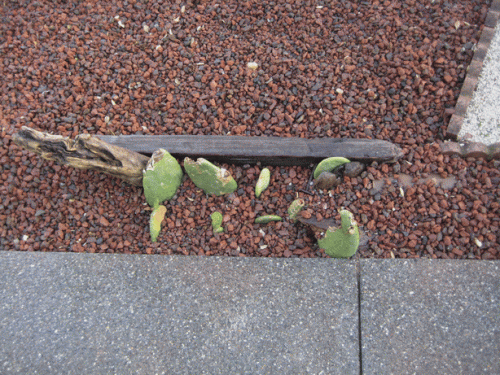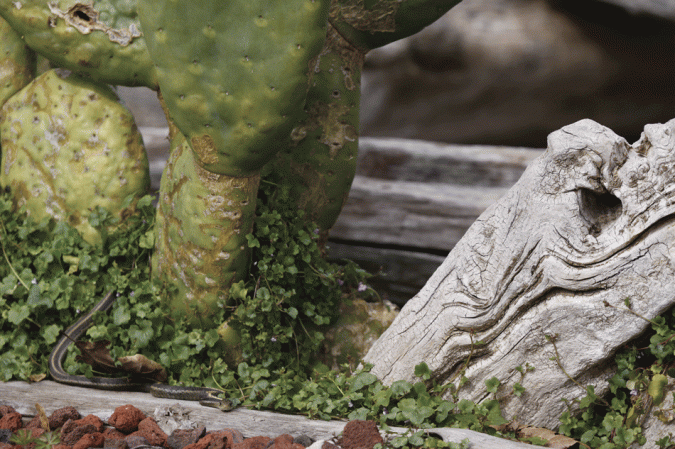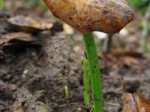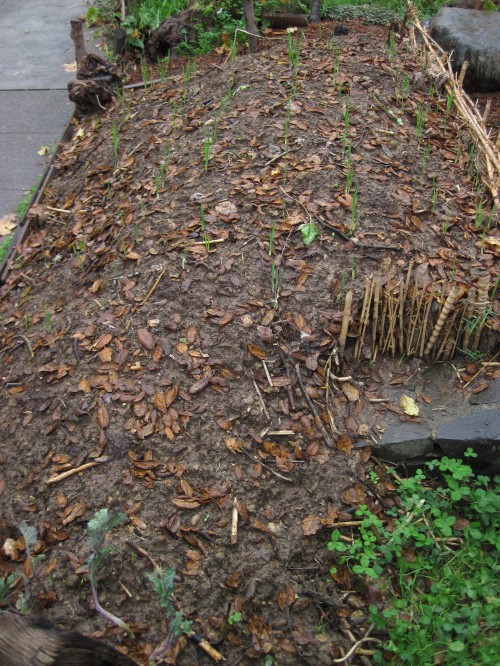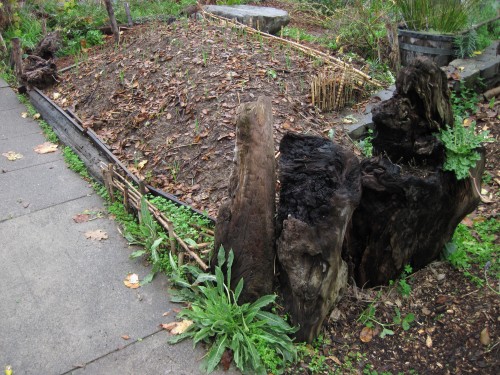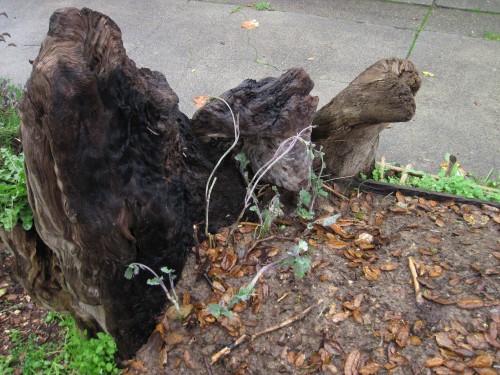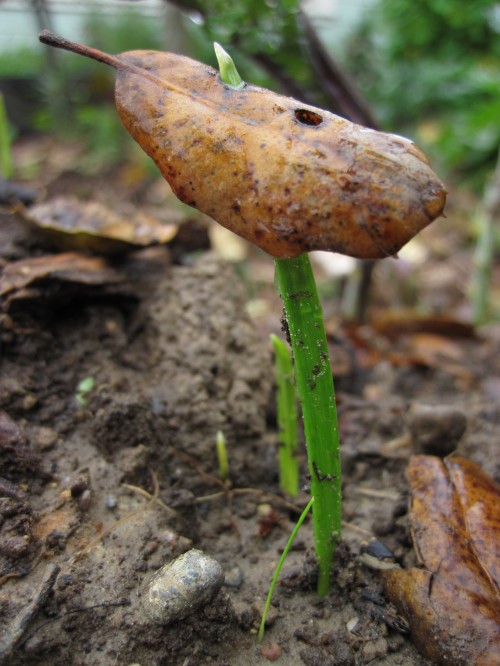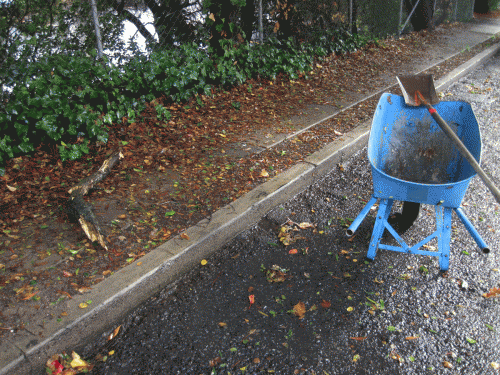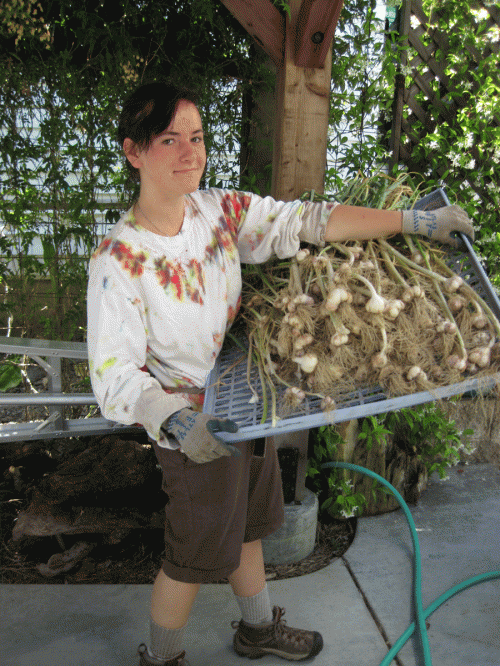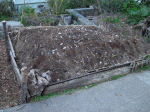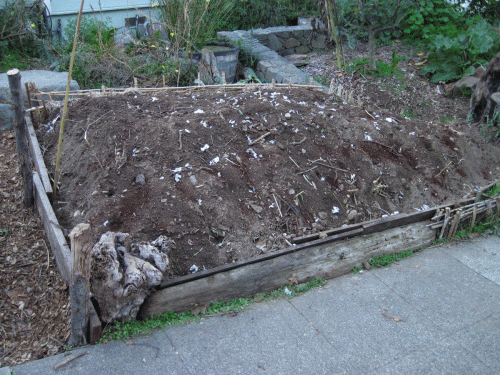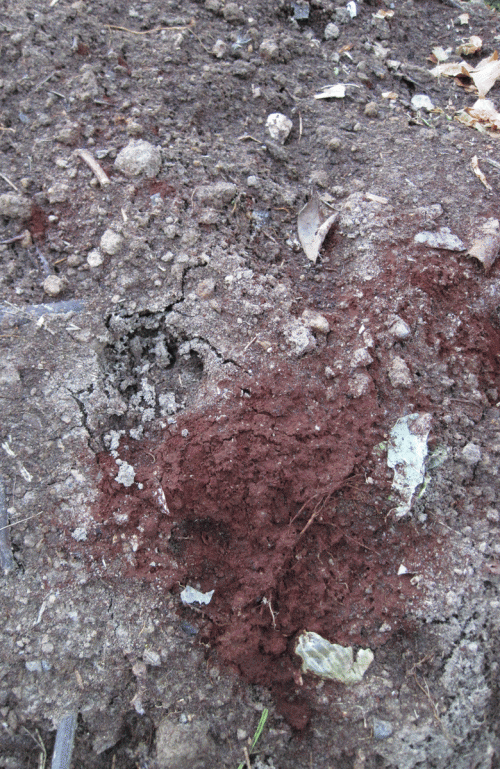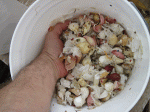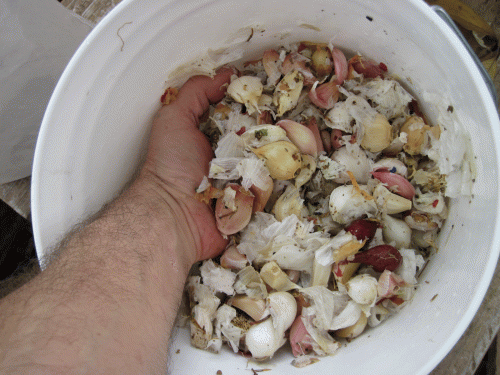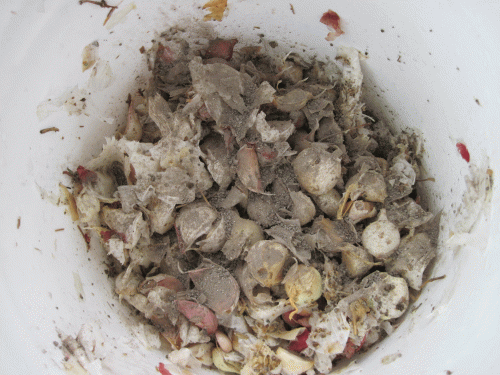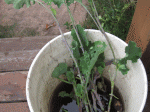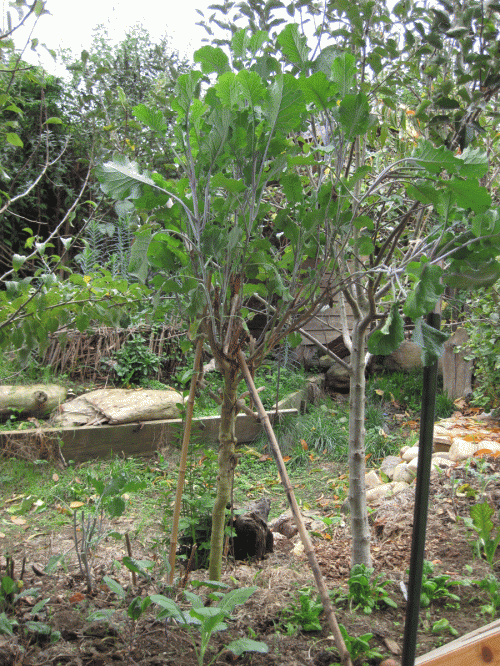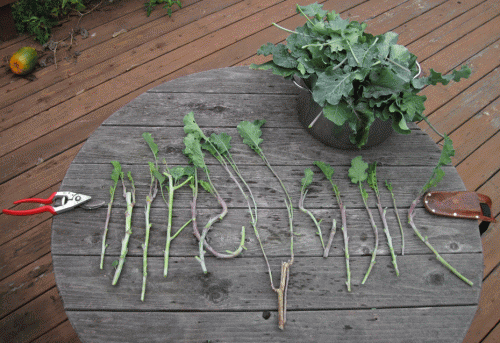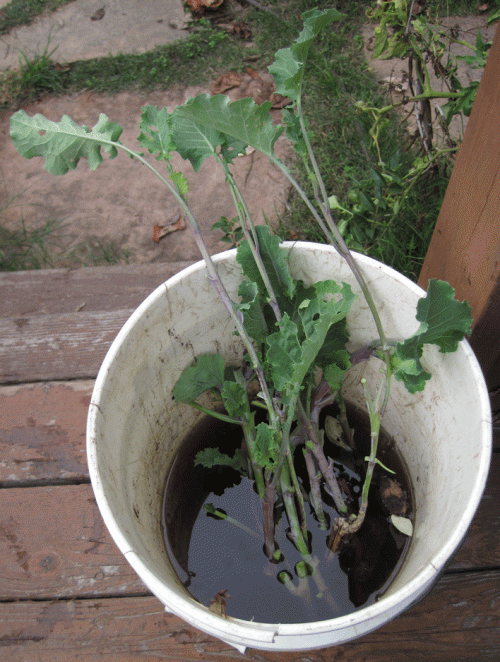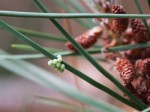
Pine Brush Pile is a Zone 4 or 5 (Permaculture) habitat oasis in Tony’s back yard. Great place to resource this year’s Xmas tree.
20130114 Pine Brush Pile (video):
Pine Brush Pile (pics in Tony’s book):
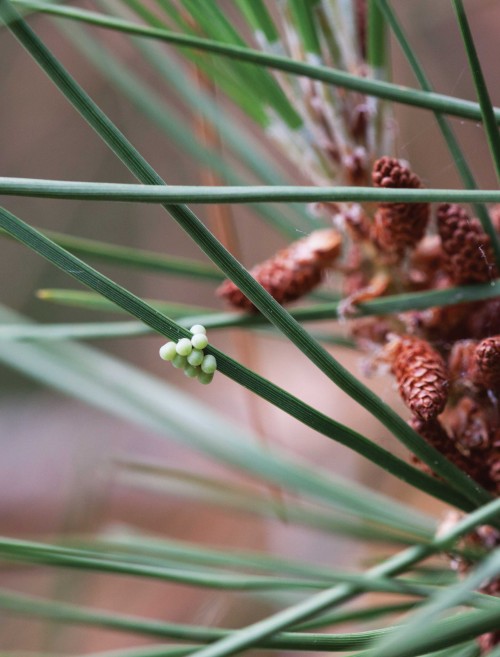 Figure B.4 Insect Eggs on Pine Needle. [The picture has two parts: the background is from a distance and an insert is the close-up of the eggs. See post below for the close-up.]
Figure B.4 Insect Eggs on Pine Needle. [The picture has two parts: the background is from a distance and an insert is the close-up of the eggs. See post below for the close-up.]
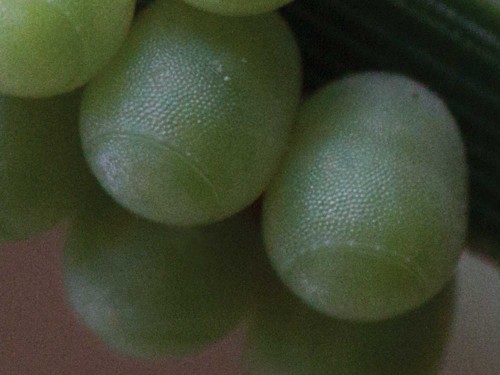 Figure B.4 Insect Eggs on Pine Needle. The insect eggs shown are probably true bug eggs. True bugs, order Hemiptera, are insects like cicadas, stink bugs, planthoppers, leafhoppers, shield bugs, aphids, and others. All bugs are insects, but not all insects are bugs! True bug eggs often have the visible “escape hatch” (the circular disc on the top of each egg), which is visible in the inset photo close-up view. I particularly love the outer texture to the egg wall — looks like lime bumps on an orange.
Figure B.4 Insect Eggs on Pine Needle. The insect eggs shown are probably true bug eggs. True bugs, order Hemiptera, are insects like cicadas, stink bugs, planthoppers, leafhoppers, shield bugs, aphids, and others. All bugs are insects, but not all insects are bugs! True bug eggs often have the visible “escape hatch” (the circular disc on the top of each egg), which is visible in the inset photo close-up view. I particularly love the outer texture to the egg wall — looks like lime bumps on an orange.
Pine Brush Pile (pics from Tony’s garden):
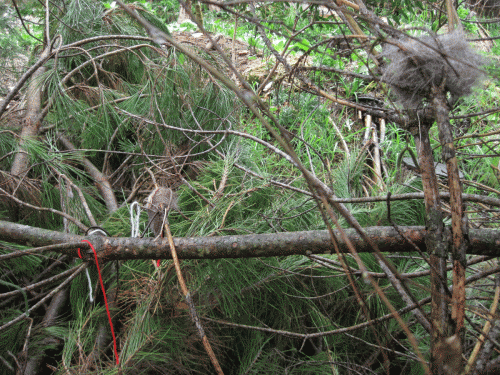 Nest-building supplies made available for birds. Lots of birds come and go in Pine Brush Pile thicket, some looking to build nests. Yarn, string, and hair is left to help them color coordinate and insulate their nests. Always fun to discover “foreign” articles in a bird nest.
Nest-building supplies made available for birds. Lots of birds come and go in Pine Brush Pile thicket, some looking to build nests. Yarn, string, and hair is left to help them color coordinate and insulate their nests. Always fun to discover “foreign” articles in a bird nest.
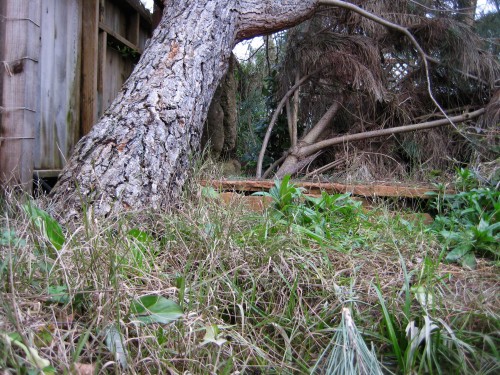 Ground view of Pine Brush Pile from Snake Shores. Perhaps a snake will slither down from the thick, warm slate of Snake Shores. It can enter Mayan Totem Seat, the 18-inch-deep stack of slate AND spacers in the foreground, or go beyond, into the coolness and food-rich jungle of Pine Brush Pile.
Ground view of Pine Brush Pile from Snake Shores. Perhaps a snake will slither down from the thick, warm slate of Snake Shores. It can enter Mayan Totem Seat, the 18-inch-deep stack of slate AND spacers in the foreground, or go beyond, into the coolness and food-rich jungle of Pine Brush Pile.
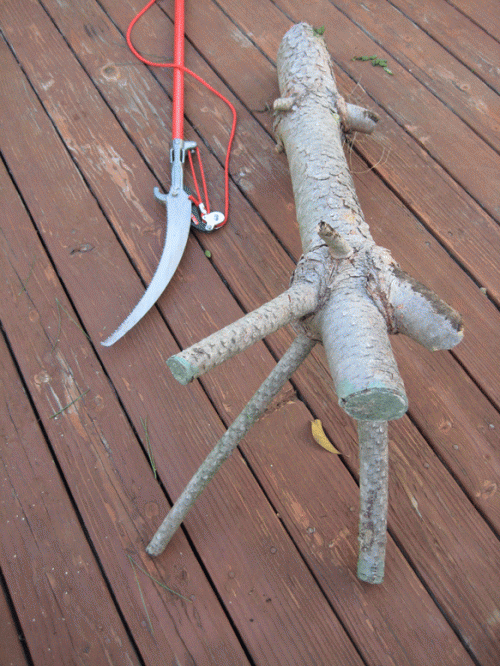 Pine log, shaped to maximize thicket-building. The branch stubs left on this log will keep the log off the ground and from snugging up to other logs. More space between logs means…[who knows but Habitat It and They Will Come!]. See next pic for the placement of this log in Pine Brush Pile.
Pine log, shaped to maximize thicket-building. The branch stubs left on this log will keep the log off the ground and from snugging up to other logs. More space between logs means…[who knows but Habitat It and They Will Come!]. See next pic for the placement of this log in Pine Brush Pile.
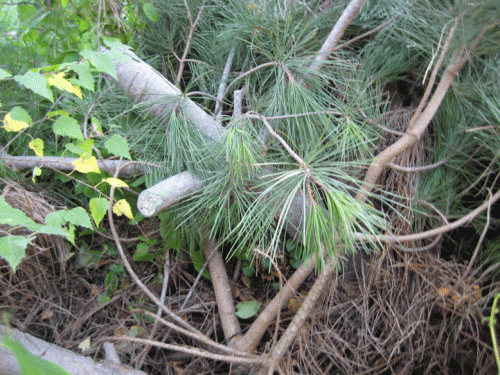 Pine logs and branches in Pine Brush Pile. Helter skelter never looked so good!
Pine logs and branches in Pine Brush Pile. Helter skelter never looked so good!
Enjoy your habitat thicket creations. Nothin‘ is “debris“ in a habitat garden food forest!
Tony

